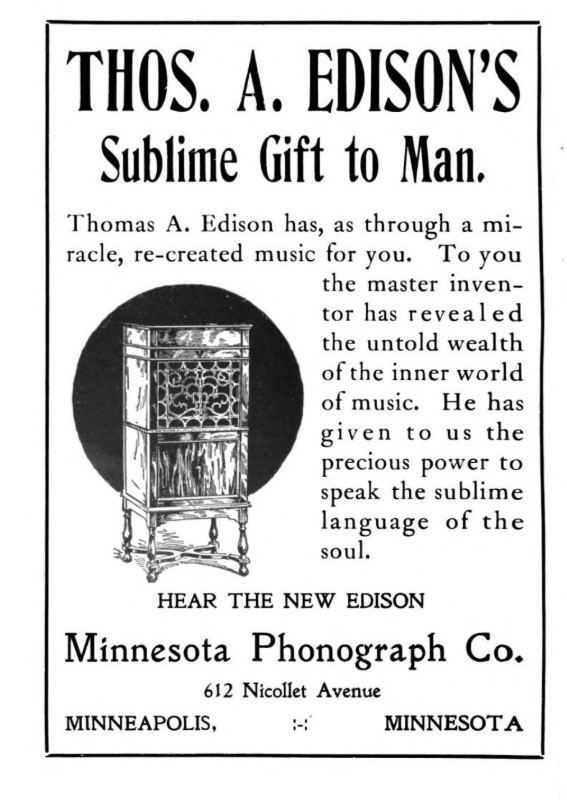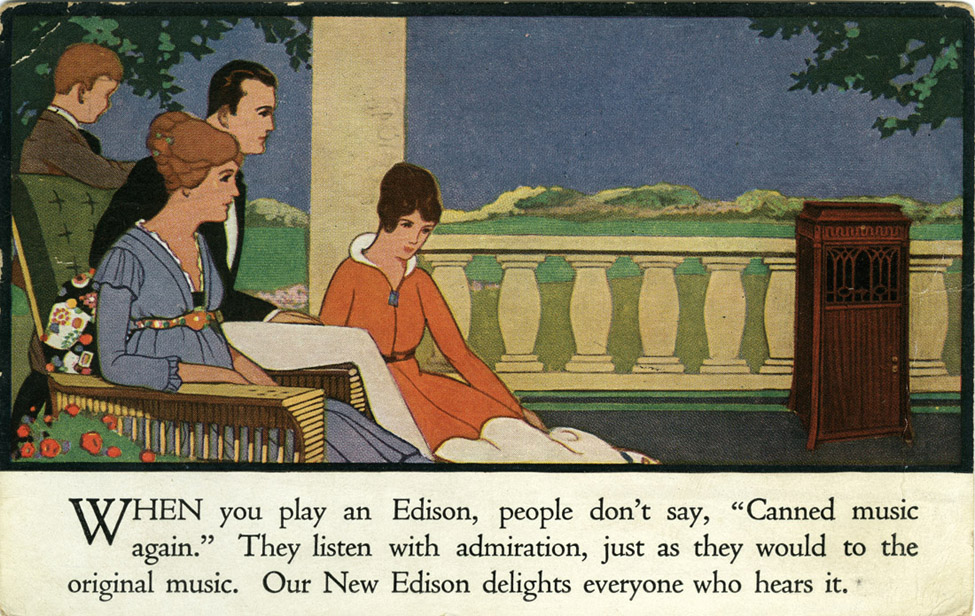The
Phonograph with a Soul
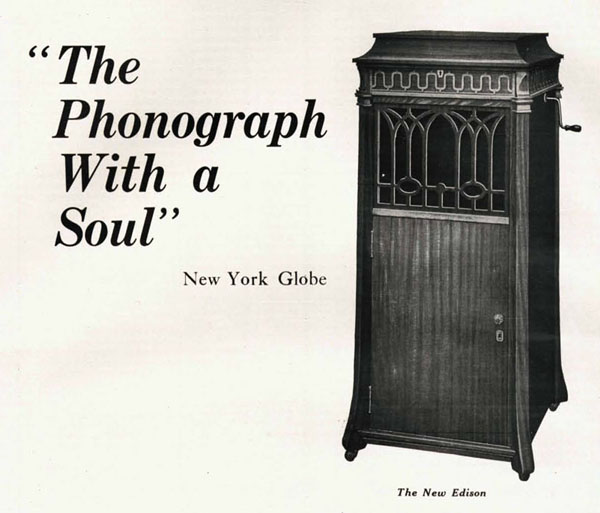
Doug Boilesen, 2019
Phonograph advertisements have used
a variety of approaches to promote the phonograph for the home. The
phonograph as an entertainer was an early and prominent advertising
theme. Edison's predications for the phonograph in his 1878 article
"The Phonograph and
Its Future" are also a good summary for the many possibilities
of how the phonograph could be used and promoted.
But in the end it was music that was
foundational in promoting the phonograph as a necessity for the happy
home and it was a theme that would evolve in phonograph advertisements
from being an entertainment device to something important to one's
very soul.
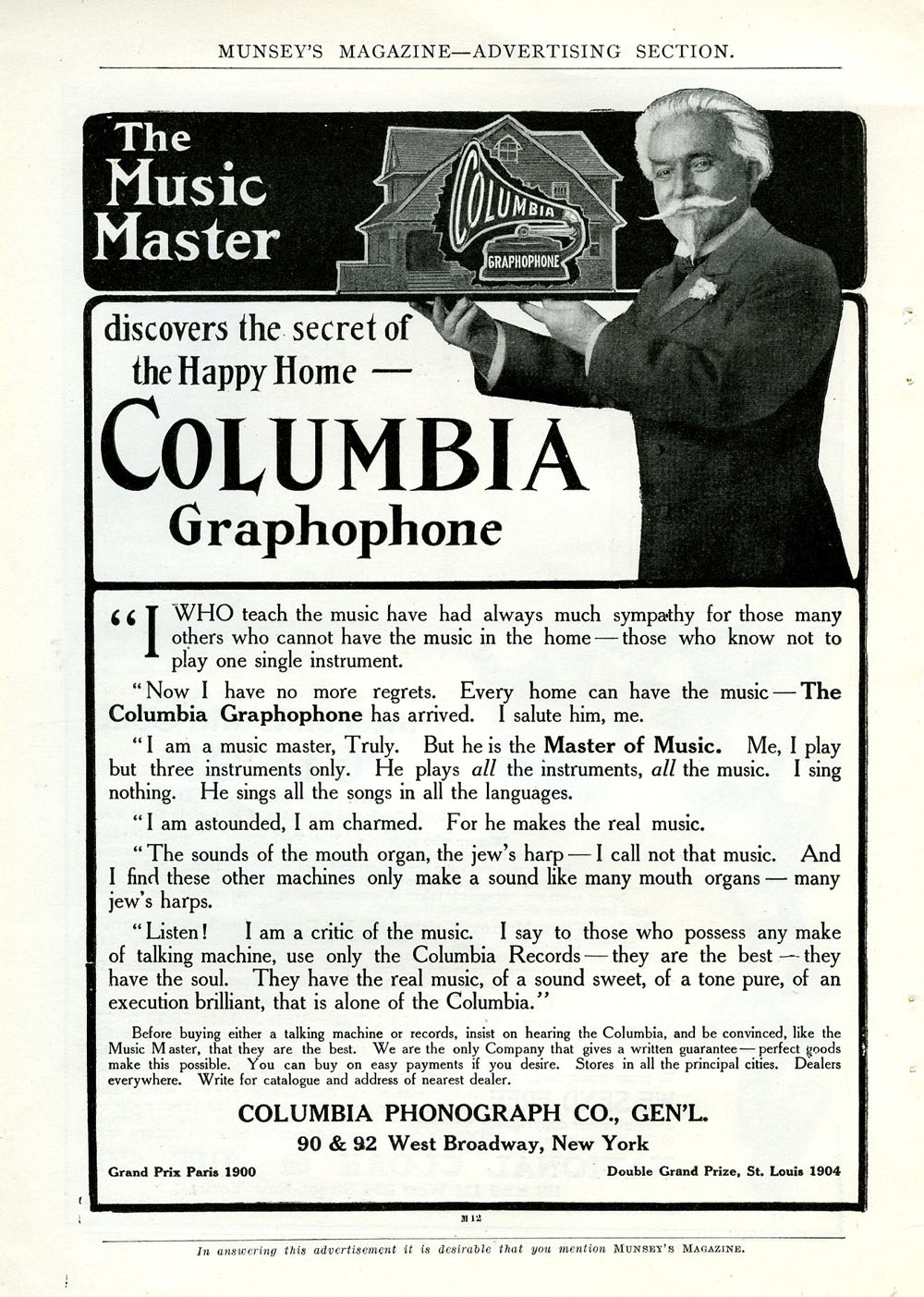
"Columbia Records
-- they are the best -- they have the soul." Munsey's Magazine,
1906
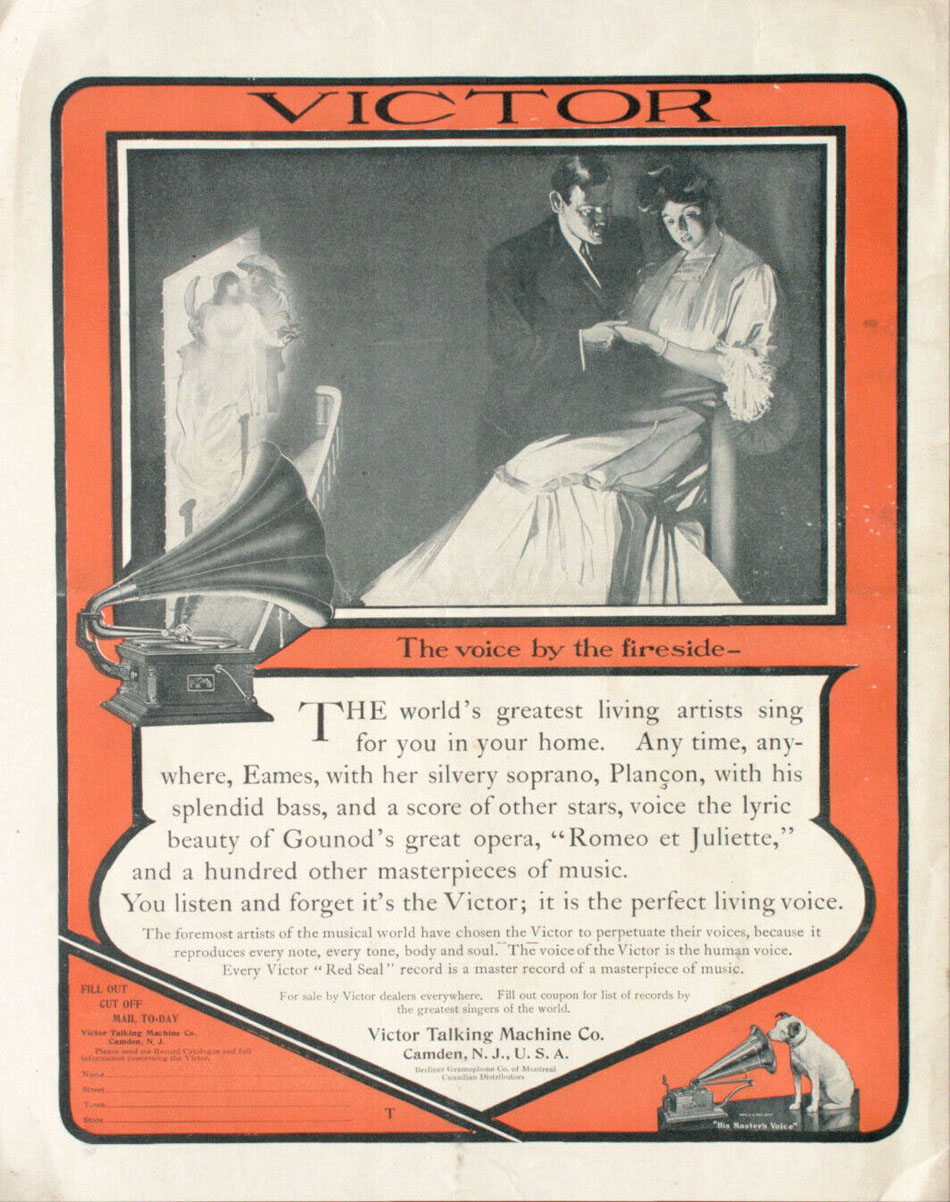
"The voice of the
Victor is the human voice. It "reproduces every note, every tone,
body and soul."
"The voice by the
fireside" - "You listen and forget it's the Victor; it is
the perfect living voice." 1906
The fidelity of the
phonograph was a major advertising theme in selling the phonograph
home because for it to be more than a novelty its sound needed to
meet some expectation of realism. A machine that accurately repeats
sound as close as possible to the original sound was therefore
always the goal of the phonograph industry.
As the phonograph developed
its ads became more definitive in promoting the fidelity of a recorded
voice in comparison with the original, living voice. In 1909 a Victrola
ad confidently stated "Only life itself can compare with the
Victrola."
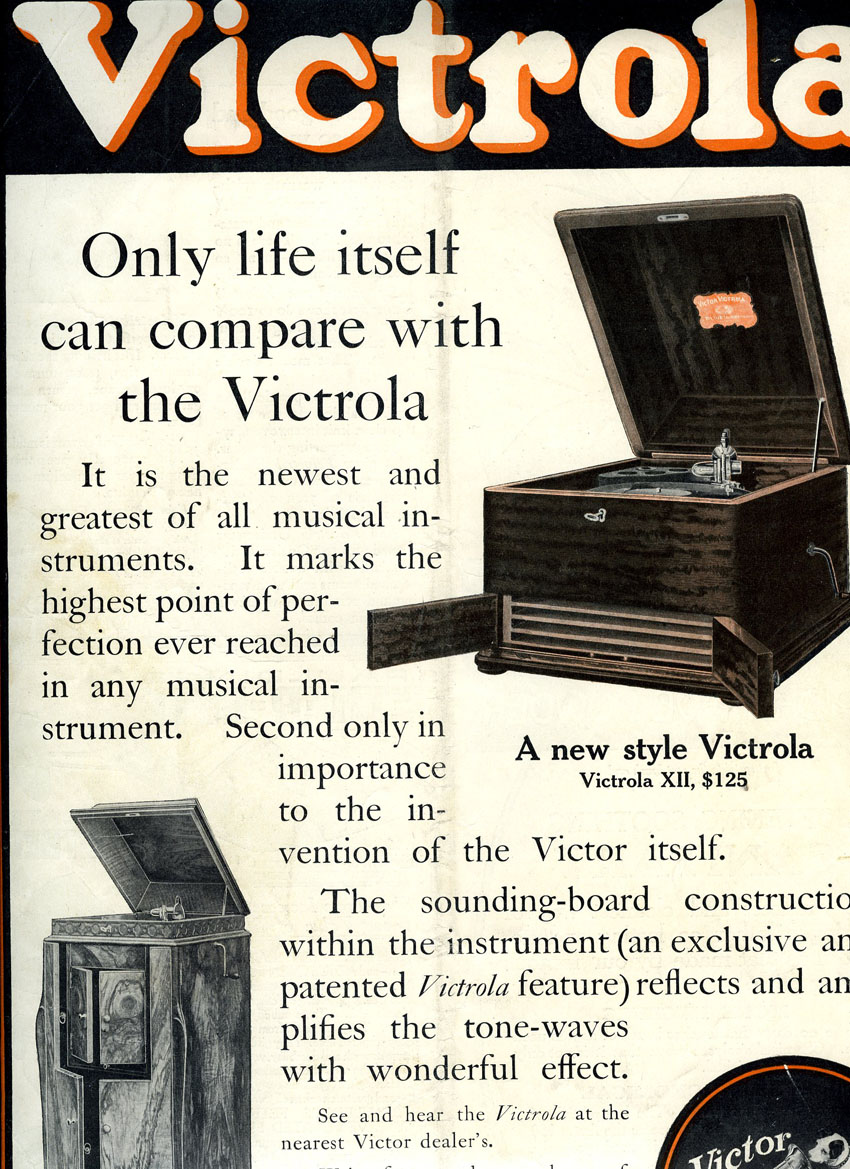
"Only life itself
can compare with the Victrola" Collier's, 1909
Recording artists were used as evidence
that there was no difference between what one would hear at a concert
and what could be heard in the home. With Farrar herself looked
pleased as she listened to her record on the Victrola the 1914 Victor
ad stated Farrar's voice "is just the same as hearing her on
the operatic or concert stage...with all the personal charm and
individuality of the artist."
.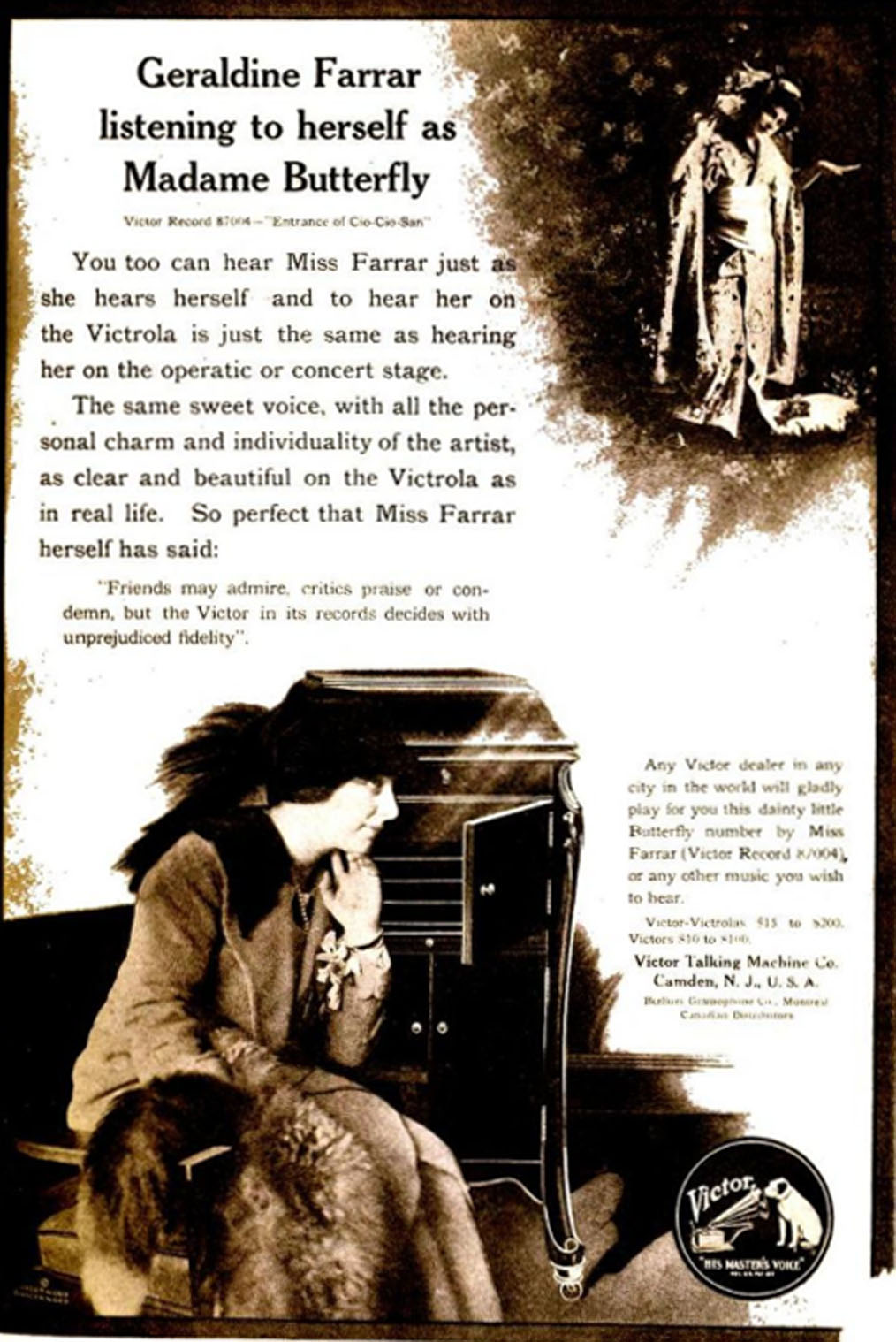
The American magazine,
1914
As the phonograph industry
increased its relationship with opera and the "greatest artists
of the world" its talking machine transformed into an 'instrument'
and the personification of the performing artist: "The instrument
that is the greatest artists."
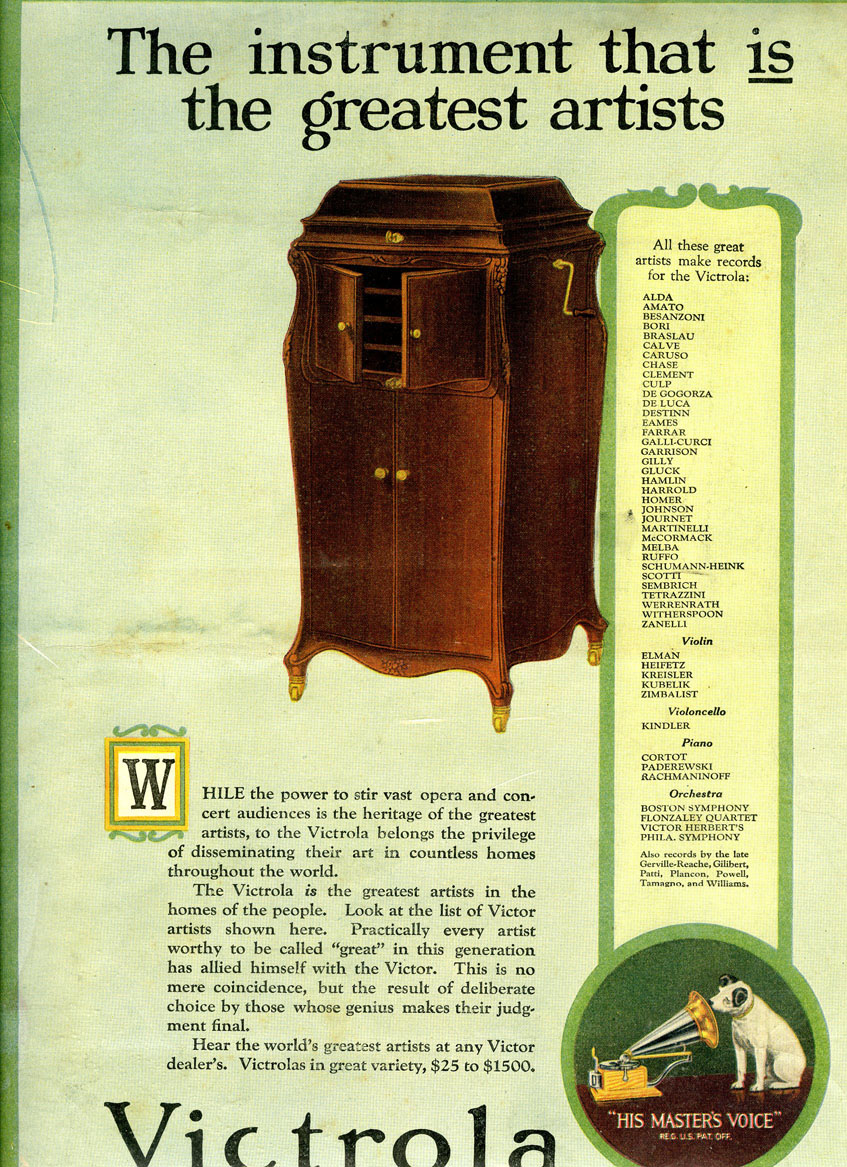
"The Victrola is
the greatest artists in the homes of the people." Victrola
1920.
.
Opera star endorsed music
ads increased with a focus on the "higher class music."
The opera related records were said to be able to envoke the listener's
potential enjoyment of "the soul-stirring arias and concerted numbers...with
all its hidden mysteries."
A 1919 Columbia Grafonola
ad described its "magical voice of music:" The Columbia
Grafonola is greater than any artist or any musical instrument.
For it is all artists and all instruments in one magical voice of
music." Hearing it "you forget instrument, record, and
artist alike-- only the soul of immortal music thrills you."
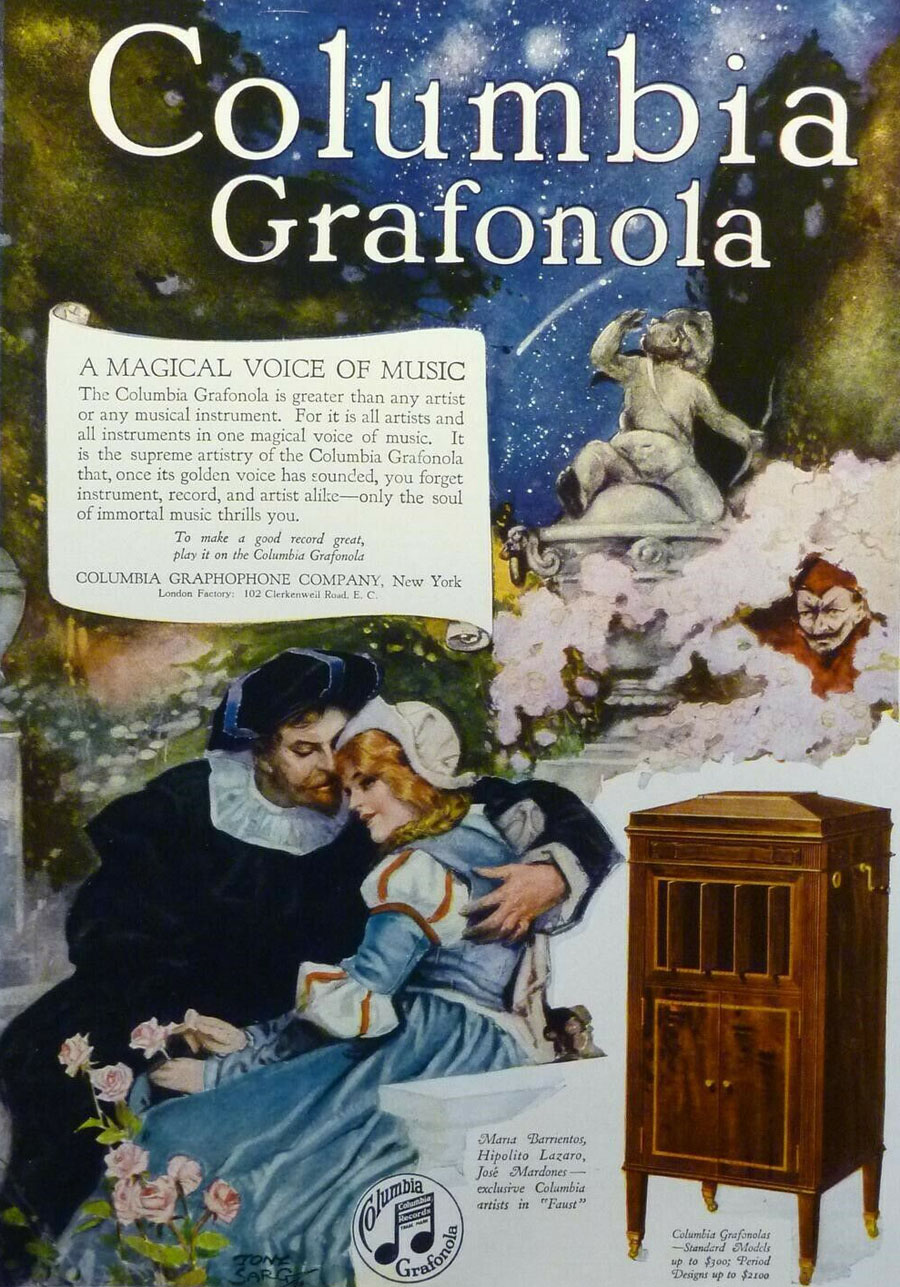
The golden voice of the
Grafonola and its "soul of immortal music"
"A Magical Voice of
Music," Columbia Grafonola, 1919
.
The "soul of immortal music"
was said to be delivered by the phonograph and its records. All that
was missing was the soul itself -- not simply the soul thrilling experience
of hearing the music but the phonograph and its record personified
as artist and soul who could transform consumer's souls.
To be part of this soul changing experience
the necessity of owning a phonograph went to another level beyond
the worldly pursuits of possessions and entertainment. It was the
idea that humans needed "the refuge of the sublime; something
that will take us away from the turmoil and clamor of daily trivialities
and lift us to the mountain-tops of peace." Listening to Music"
was one way to help our "making the soul." Listening to
music had the ability to repair to the sublime and the eternal."
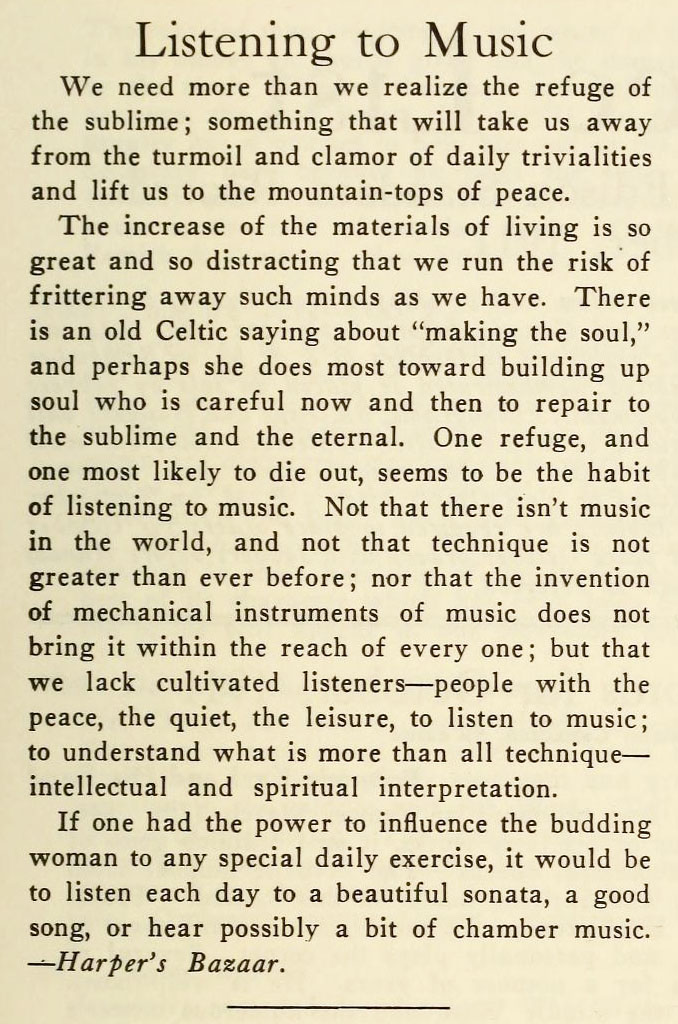
Harper's Bazaar
article reprinted in The Edison Phonograph
Monthly, August 1911
Edison took this relationship between
the phonograph and the soul to its ultimate conclusion when the Edison
advertisements started promoting the New Edison Disc Phonograph
of 1916 as "The Phonograph with a Soul." This was
a "mechanical musical device possessing the human element."
The New Edison has bridged "the gulf between the human and the
purely mechanical..." "This musical marvel of all ages captures
" the very magnetism of the artist's personality."
.
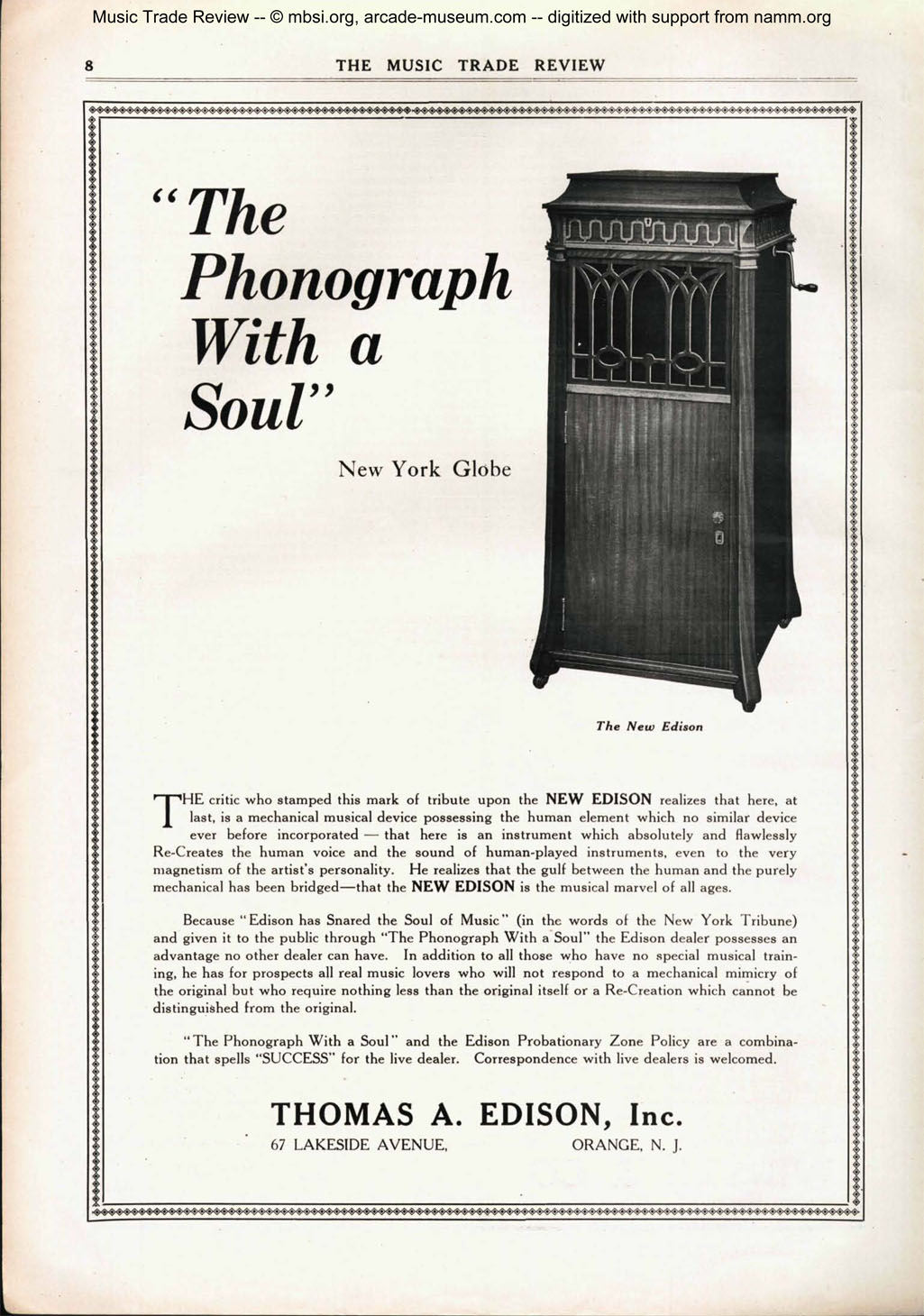
The Music Trade Review,
1916 (courtesy of International
Arcade Museum Library).
.
.
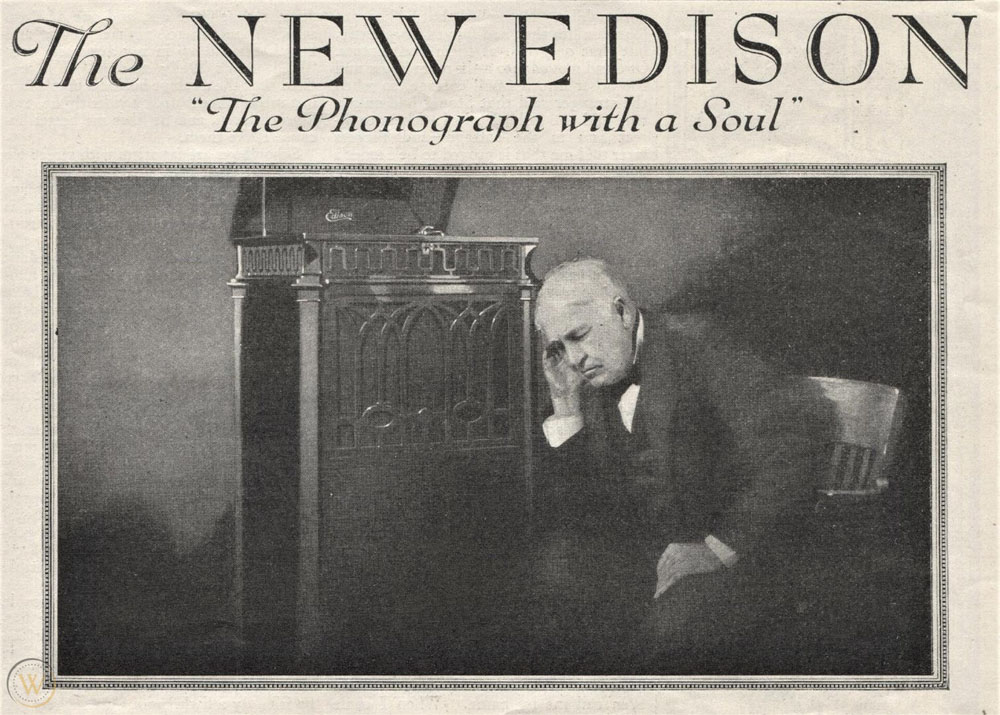
The New Edison, "The
Phonograph with a Soul"
1921.
.
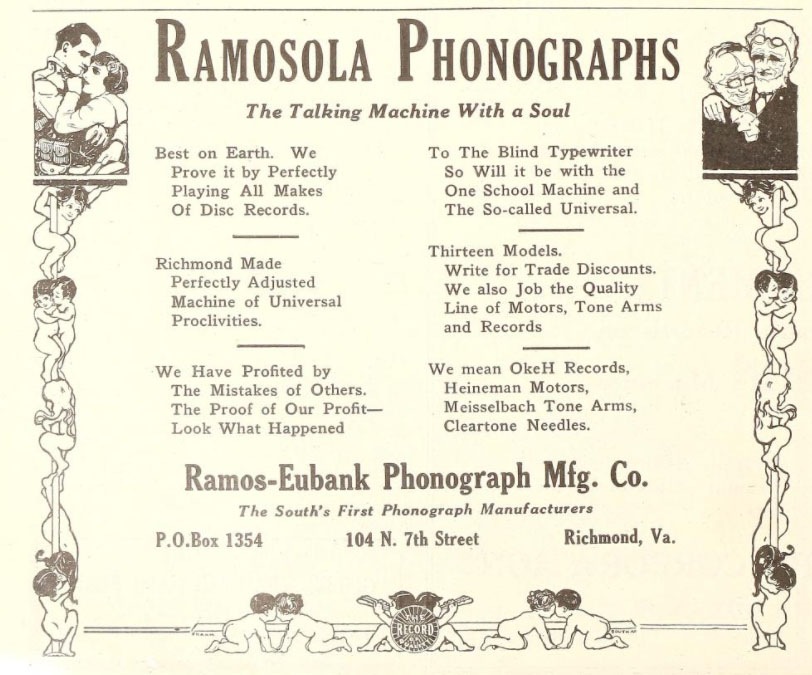
"The Talking Machine
With a Soul," The Talking Machine World, June 15, 1918
The Masterphone "The
Soul of the Phonograph"
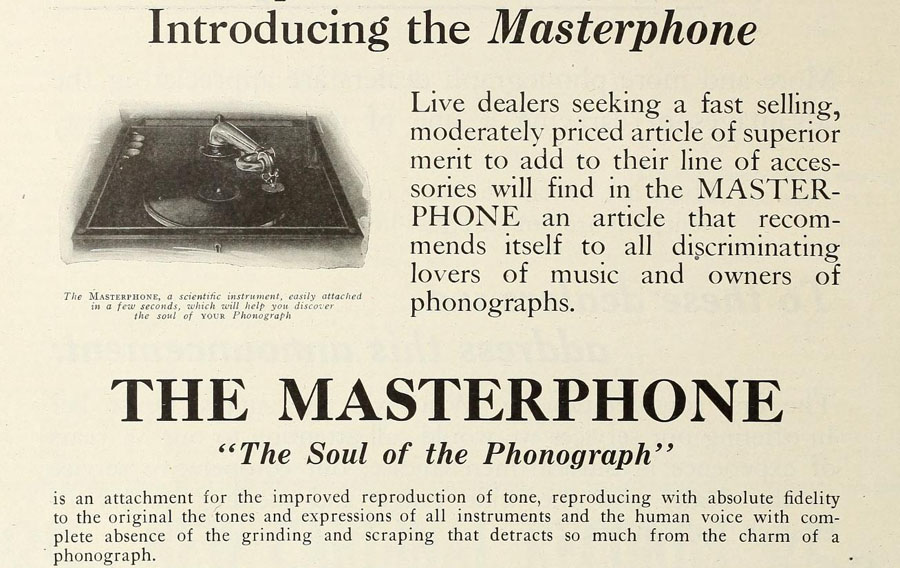
In 1921 the Masterphone Corporation
of America introduced their "attachment for the improved reproduction
of tone..." April 1921, The
Talking Machine World
Edison's Sublime Gift to Mankind
The New Edison has the
"precious power to speak the sublime language of the soul."
1916
"This precious power" that
Edison was offering to mankind could be viewed by readers as another
example of Edison as the "Wizard
of Menlo Park." With the introduction of Edison's Diamond
Disc Phonograph and its records described as a "miracle"
of the "master inventor," his "re-created music"
was an extension of the original wonder of Edison's invention of a
machine that "captured sound" and then reproduced the human
voice.
With Edison's ads offering a machine
in which sublime music was "re-created" it was perhaps a
small marketing step to say that such a machine was a "phonograph
with a soul."
.
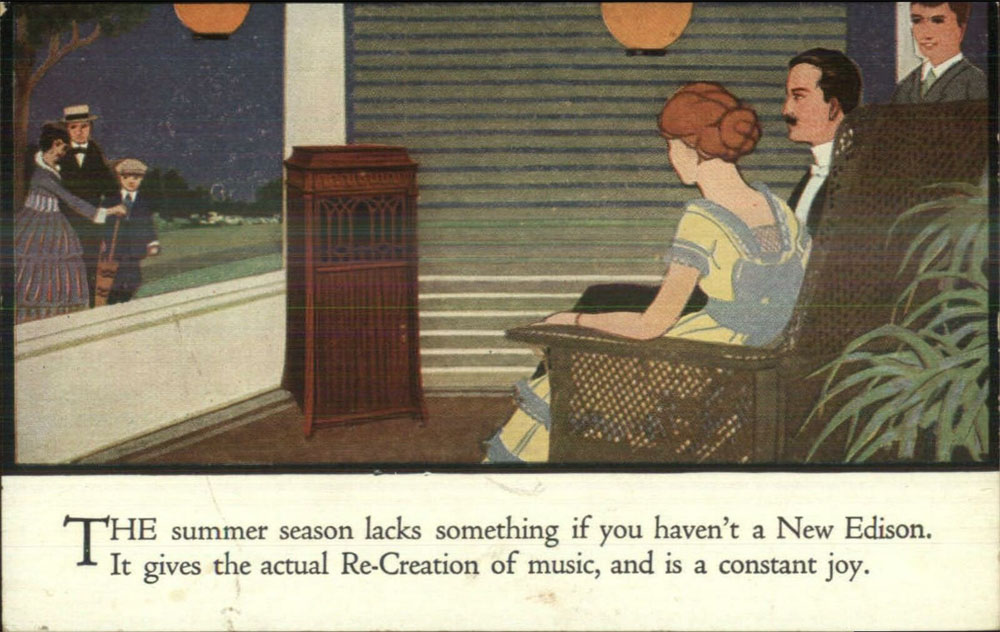
The 'actual Re-Creation
of music... Advertising postcard, 1915
.
.
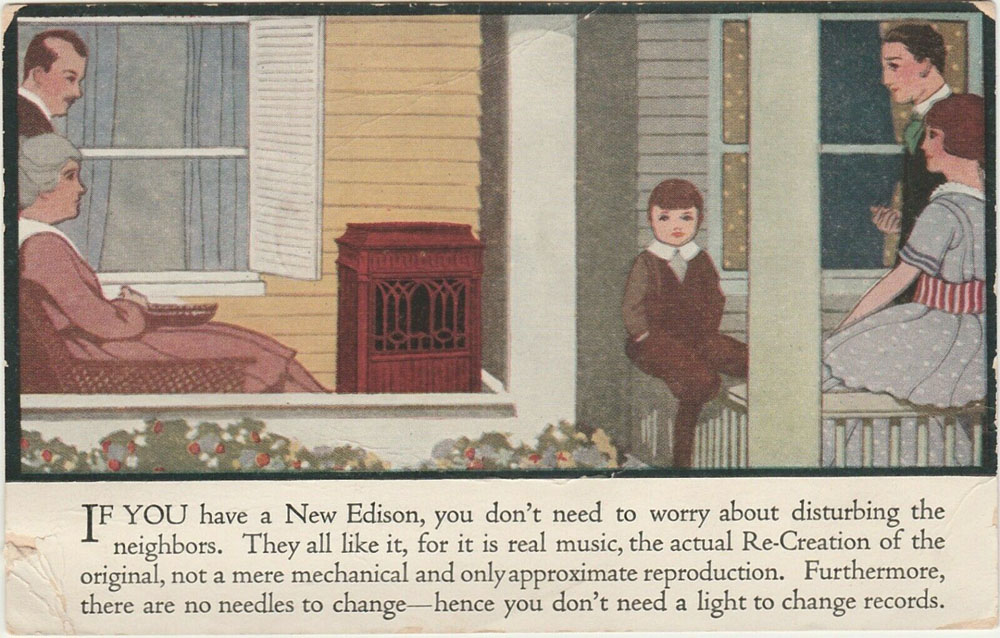
The 'actual Re-Creation
of music" not a mere mechanical" reproduction. Advertising
postcard, 1915
.
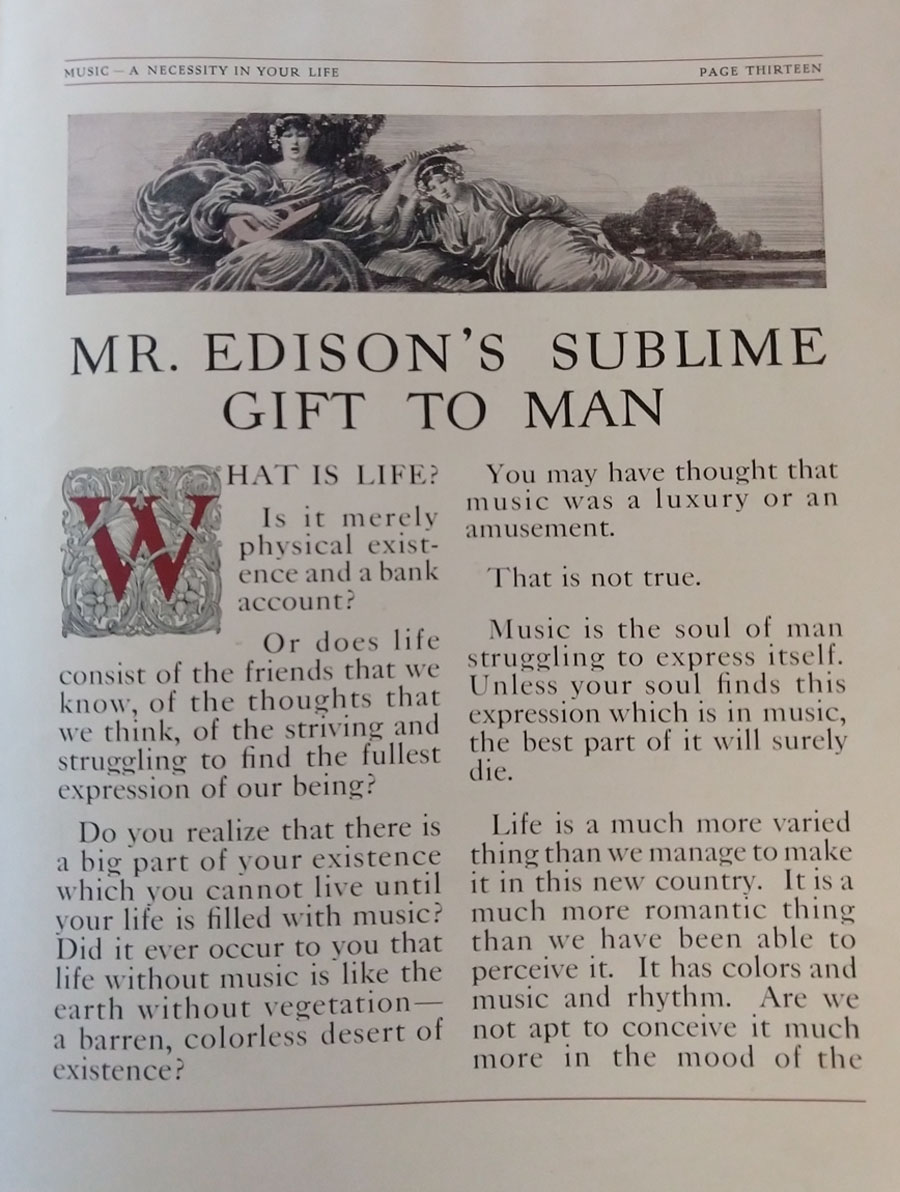
"Music is the soul
of man struggling to express itself." Thomas
A. Edison Dealer Book, 1917
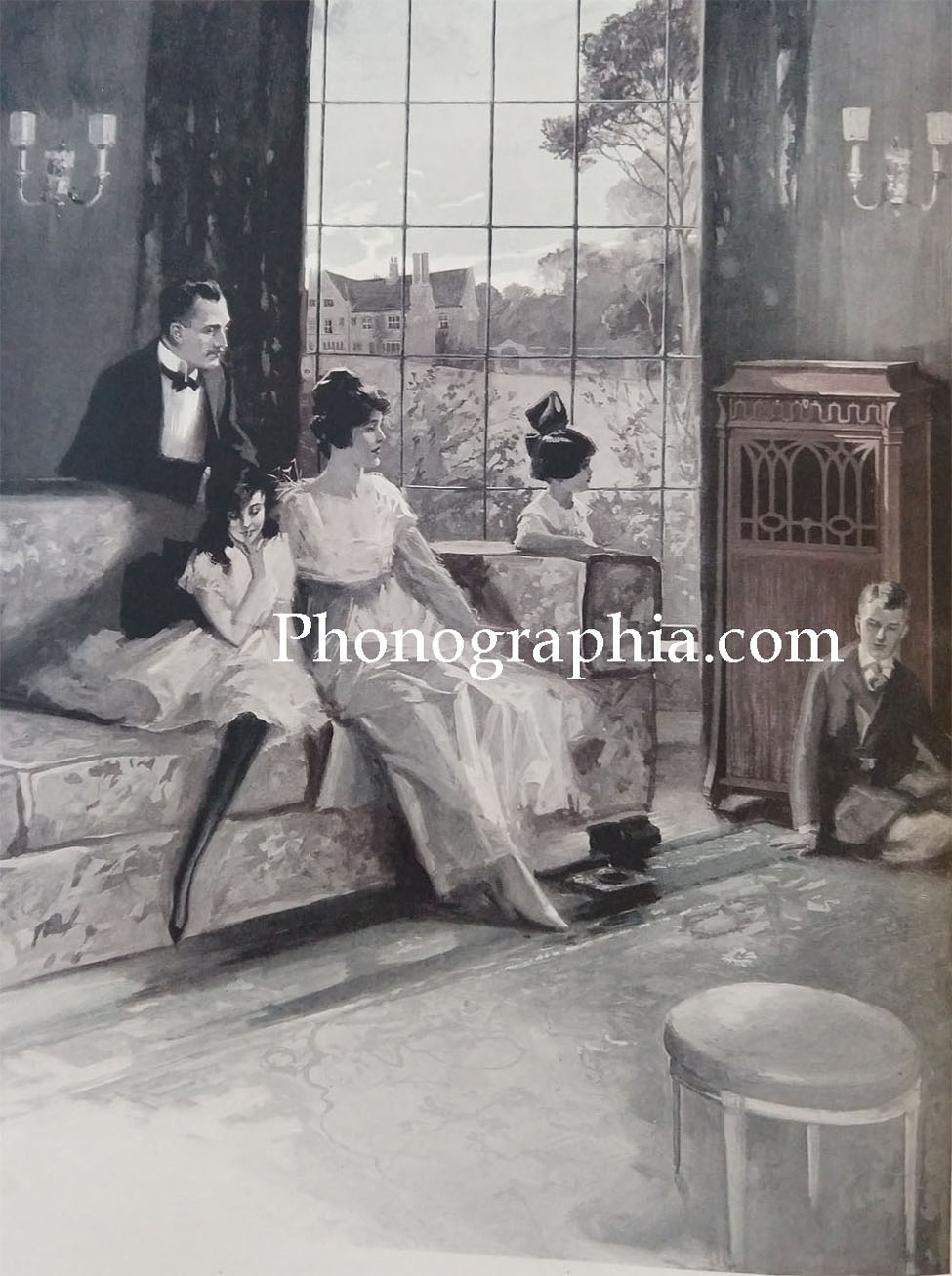
"Unless music comes
into your home, that home is not half a home. It is only a house."
Thomas A. Edison Dealer
Book, 1917
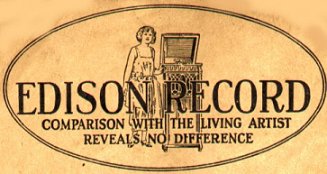
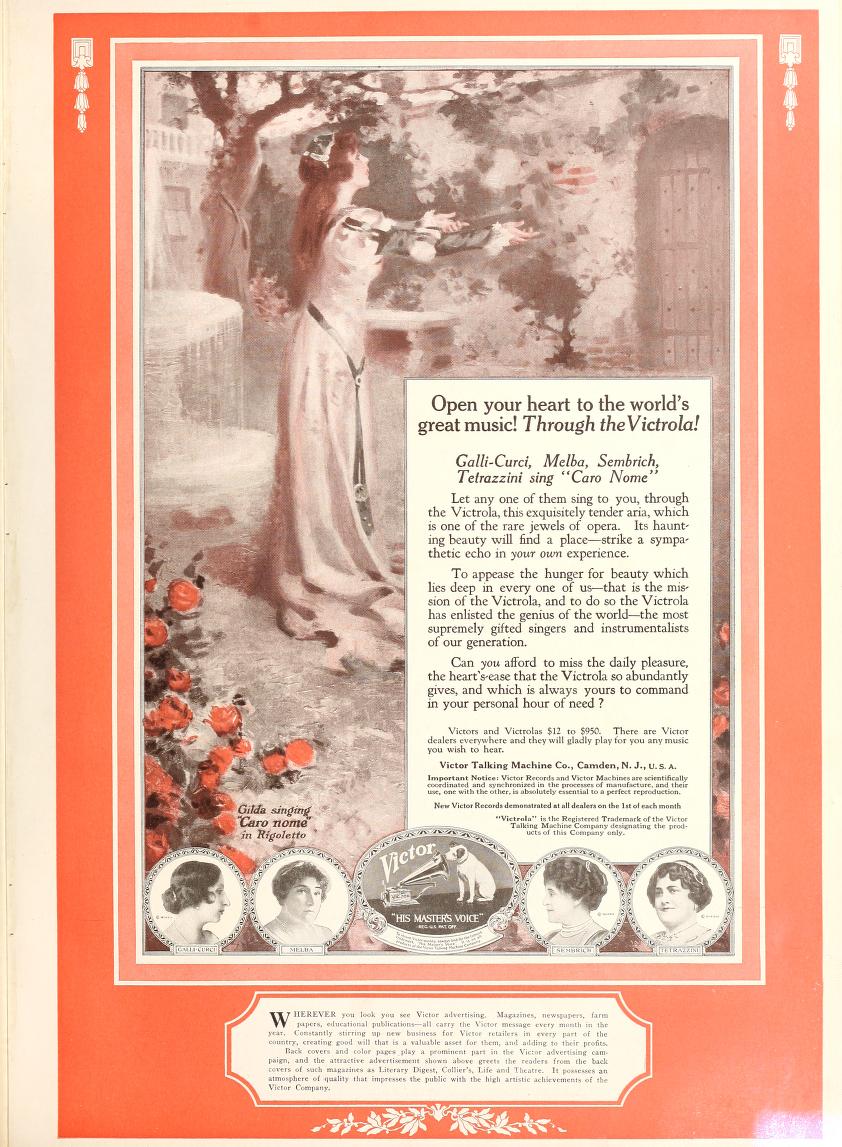
Open your heart to the
world's great music! The Talking Machine World, July 1919
"The Spirit of
Music" instantly transported by the Columbia Grafonola.
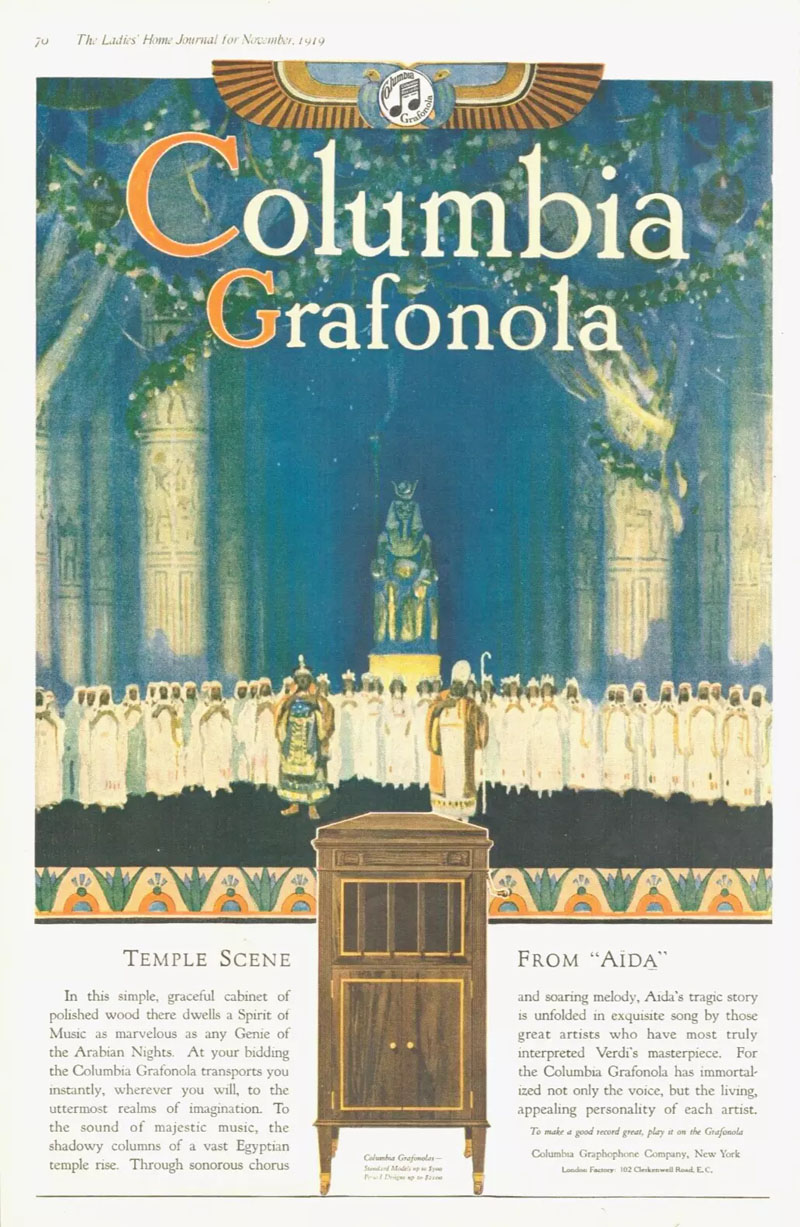
"In this simple, graceful cabinet
of polished wood there dwells a Spirit of Music as marvelous as any
Genie of the Arabian Nights." The Ladies' Home Journal,
1919
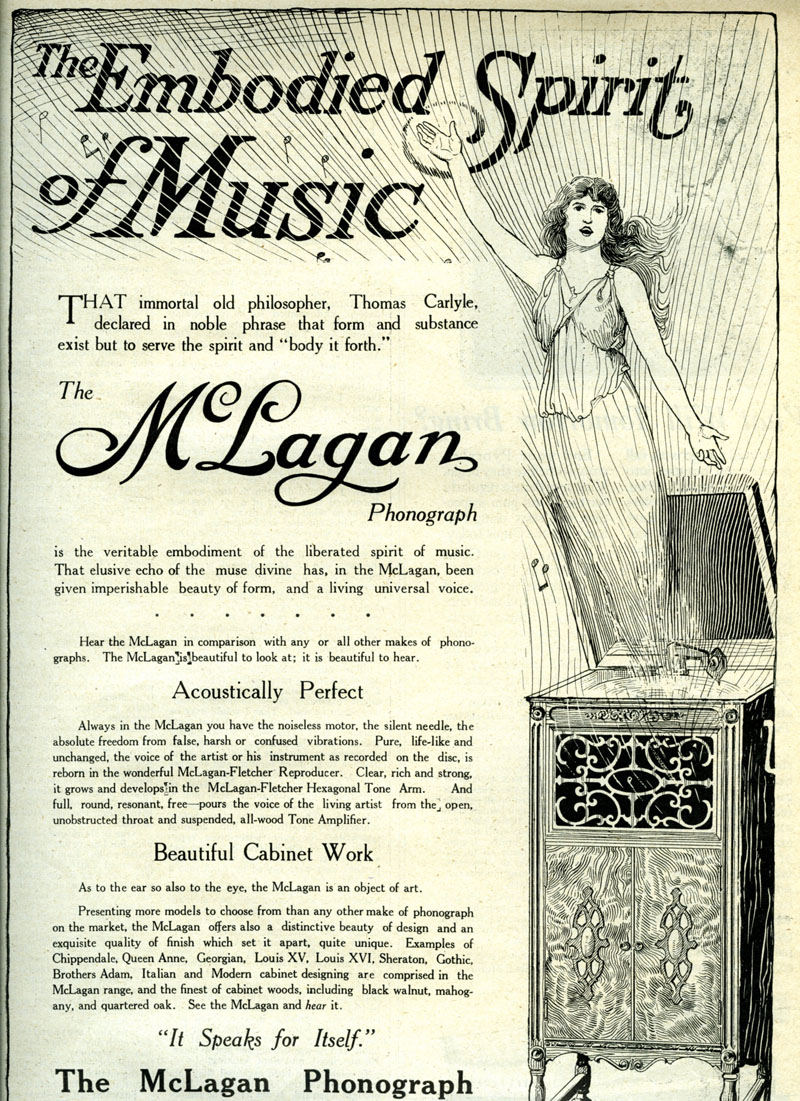
"The veritable
embodiment of the liberated spirit of music," MacLean's Magazine,
1921

The Starr Phonograph plays
The Soul of the Artist - The Talking Machine World, August 1922
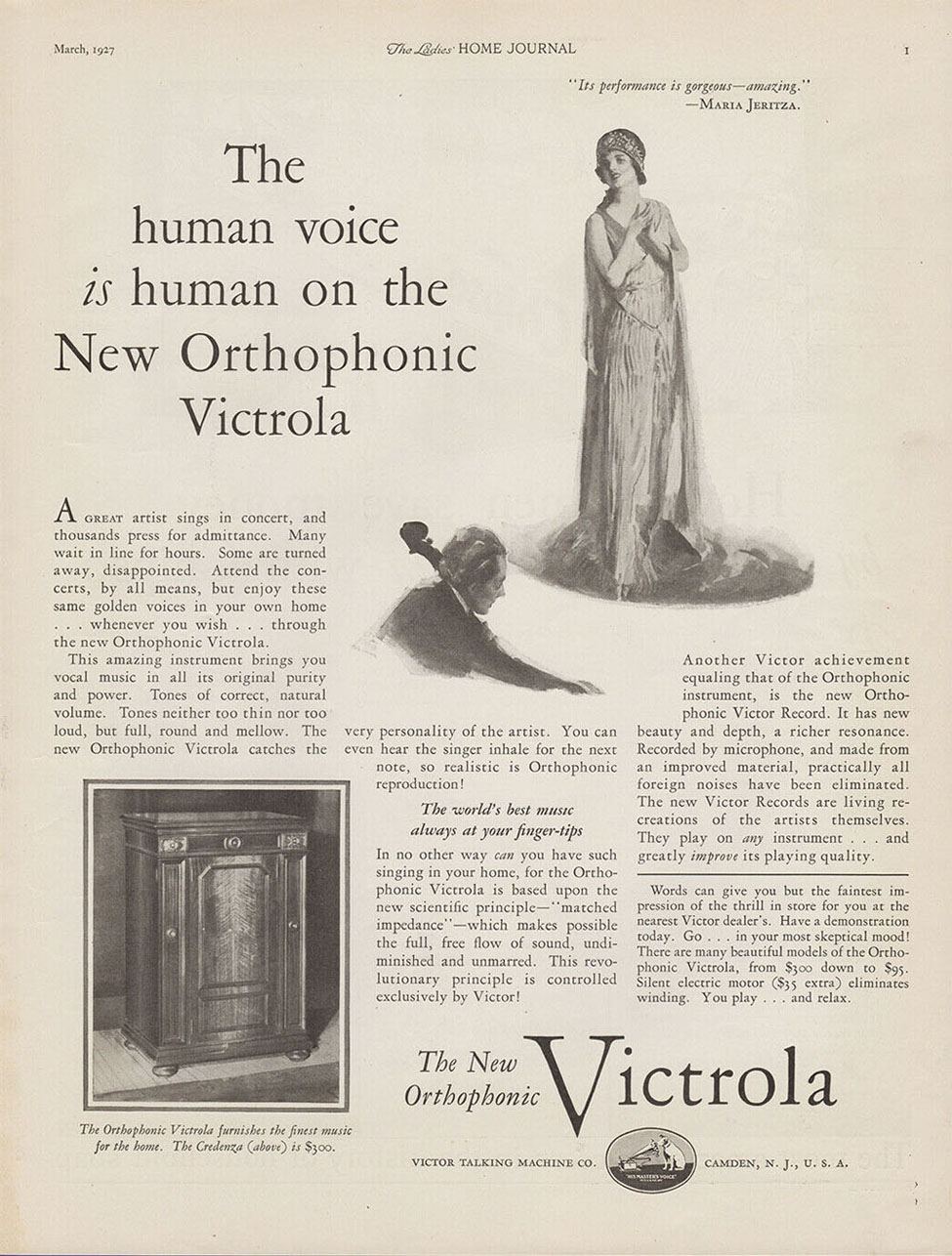
"The human voice is
human on the New Othrophonic Victrola...with the very personality of
the artist." The Ladies' Home Journal, 1927
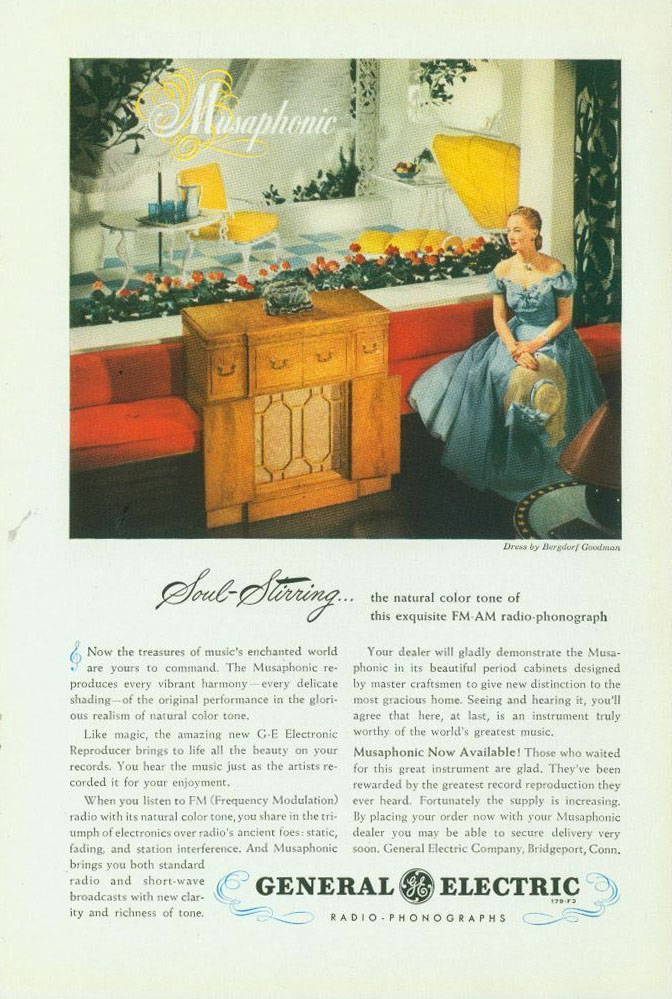
"Soul-Stirring..."
General Electric's Musicphonic Radio-Phonograph, 1947

Phonographia
|
